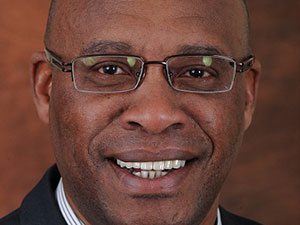
[miningmx.com] – TSHEDISO Matona’s debut presentation as CEO of Eskom was nervy in parts, but there was a point when he captured just why the failings of South Africa’s power utility are a point of distress to almost everyone in the country.
“Eskom is not like other utilities,” he said at the group’s interim results presentation on November 25. “If the trains stop running [at Transnet] life goes on”.
Conversely, when the lights go out – as they have been in South Africa during the last two weeks of load-shedding – there’s no more palpable signal that the country is failing.
Matona is quite right to single out why Eskom’s failings attract the magnifying glass: that moment of shutdown, which is always a surprise to the senses, is a reminder that a societal machine, or part of it, is broken.
Against this background, it was perhaps less surprising that Lynne Brown, minister of the public enterprises department to which Eskom reports, was more forthright about the utility’s challenges than at any time during that of her predecessor.
Government’s approval of a financial rescue plan for Eskom, which was agreed in September and begins with a R20bn equity cash injection, was an effort to “move mountains” and scale them …. We have to be expert mountaineers,” she said
“It is multi-faceted and complex,” she said of the rescue plan which also includes government converting loans to equity as well as an 11.5% increase in the budget for expansions to R280bn. “[B]ut I believe it is the sea change that we have all been looking for,” said Brown of the intervention.
In addition to more funds, there are plans to somehow extract payment for some R4bn in Soweto-based arrears, as well as debtor’s over 16 days elsewhere in the country. Cutting power is not an option.
Time is not on Eskom’s side, however, especially as one considers the possibility that the government financial intervention is less a sea-change than a sea rescue.
Tsholofelo Molefe, Eskom CFO, said a further ratings downgrade by Moody’s, from the current sub-investment grade, could see loan covenants from lenders re-called. This couldn’t be more critical simply because Eskom can’t even afford to pay the debt it is currently scheduled to do.
Apart from its obvious operational failings, especially the shortcomings of its capital project management skills, Eskom is all about the balance sheet. The reason Brown and the government is climbing in now is that Eskom as a going concern is under threat.
Roughly 3% of Eskom’s borrowings mature in a year – equal to R7.95bn – with the other half of its total borrowings – R128bn – maturing in the next 10 years.
You can see in its interim figures published on November 25 the burden of capital repayments and interest on Eskom’s balance sheet, and the company’s overall solvency, especially as, during now, strikes in the mining sector lowered sales.
Eskom started the financial year with R19.7bn in cash. It generated a further R18bn in cash in the six months to September, but was required to invest R25bn in projects. This means it had cash left of R12bn.
It then raised R13.4bn in debt. What’s alarming, however, is that the debt raised was used to repay R8.4bn in debt elsewhere on the balance sheet, and then a further R5.6bn in interest. This left cash after a nominal income amount from investments in securities of R13bn – R6.8bn less than which it started.
In other words, Eskom is in a debt trap of note: raising debt to pay debt which, against a backdrop of rapidly falling sales, means the company is sliding into insolvency. If this were a private company, it’d be on the gurney if not already shrouded.
The prospects for the second half of the year make the need for government to step in an expedience.
With the cash-spinning winter tariff behind it, revenues are expected to decline so heavily that the R9.3bn in net profit end-September will be reduced to a slim R500m.
It’s a horrid picture and perhaps underpins Matona’s comments that Eskom is “… more leveraged than it has ever been and that is not sustainable”.
The response is, in addition to the government interventions mentioned above, for a R60bn in company efficiencies – measures that Matona says will affect new staffing levels – while the retrospective adjustment on the previous tariff will add R7.8bn.
A further R50bn will be added in terms of the increased tariff for the remaining two years of the latest tariff structure but this is bound to negatively affect the mining sector on which Eskom so heavily relies.
As well as calling on forbearance and even minor miracles, Matona and Brown also struck a positive note saying Eskom could be in the midst of a new dawn. But surely it is incumbent to get Medupi and Kusile running smoothly.
There’s talk delays at Medupi could result in another penalty on the take-or-pay coal agreement with Exxaro Resources, possibly of up to R1bn in Eskom’s 2016 and 2017 financial years. That’s the last thing Eskom’s balance sheet needs, albeit minor.
One footnote is about Matona himself. He grew touchy at the end of the presentation as journalists quizzed him on a number of valid points such as executive pay and why he’d opted for certain appointments in his management rejig.
The rejig, incidentally, was an equally valid attempt by Matona to draw a new slate. The fact that media were unimpressed may provide Matona with an important insight into the intensity of his position – one he couldn’t appreciate in his previous role as director-general of public enterprises.
Critics have said Matona, as a career politician, is unsuited to the role at Eskom, but in a sense, he’s the perfect middleman.
Eskom was barely independent of its shareholder in the past, but now it’s an emblem of a national effort to bring South Africa out of its economic doldrums. Get this right without hideous economic deterioration and there’s real hope for the country.











